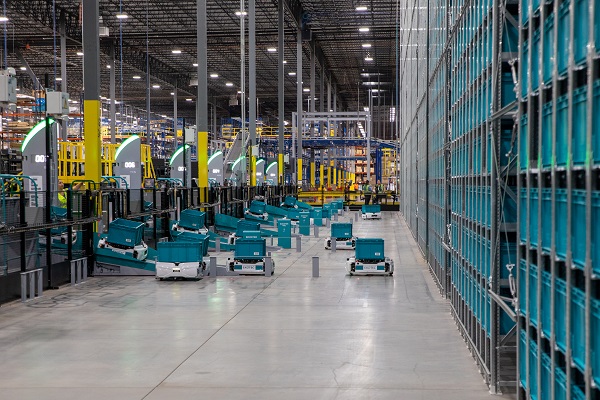
The pandemic brought forward a myriad of logistical challenges. And even as we begin to see the light at the end of the tunnel, navigating consumer expectations and changes that were brought on by the pandemic can be overwhelming.
In June 2021, The White House wrote, “These are times of rapid transition for the U.S. economy.” It went on to detail the reasons Why the Pandemic Has Disrupted Supply Chains. Logistics challenges resulting from the pandemic have been widely reported, but like many challenges, there are lessons to be learned, and there is opportunity to improve. Here are a few ways warehouse robotics can help evolve your company’s logistics.
Workplace safety
During the height of the pandemic, the supply chain was constantly in the headlines. As consumer demand for goods peaked, there was a simultaneous disruption in the labor force. Infection was spreading fast and far and businesses were pushed to adapt and find ways to keep employees safe and healthy while delivering on customer demand.
Having systems in place that allow employees to work independently and in a safe, comfortable environment is crucial to avoid slowdowns and staffing issues. Robotic systems improve working conditions for human operators by reducing highly repetitive, physically intensive tasks such as excessive walking, lifting, and bending.
Flexibility in operations and adapting to change with ease
Having operations systems that can adapt to consumer demand is invaluable. Whether you’ve got an influx of orders that requires you to expand, or you’ve hit a bump in the road and need to scale back, robotics systems can easily scale as needed.
As businesses look to improve their operations and profitability by navigating rapid shifts in business models and customer expectations, they’re finding that robotics systems can easily scale up or down.
Before the pandemic, retailers would likely scale up operations during peak seasons with the solution of “just-add-more-workers”, but with recent labor shortages, this hasn’t been a feasible solution for many.
Order fulfillment and labor shortages
Consumers have a growing expectation of efficient and timely order fulfillment and e-commerce has grown significantly since the start of the pandemic. In January 2022, Reuters reported roughly 12% out-of-stock levels leaving many consumers wanting more. With labor shortages and increased freight costs it’s clear that some organizational changes need to happen to meet customer needs.
To help businesses meet this demand, robotics systems are needed to increase handling capacity, significantly accelerate order processing time and improve customer service quality. The best systems are ones that are flexible and can adapt to inevitable changes.
While the pandemic has put pressure on supply chains, and we don’t see signs of letting up in the post-pandemic world, we see a lot of opportunity. Businesses are looking to be more efficient, and robotics have proven to help them become safer, quicker and more flexible.
Author: Rudi Lueg, managing director of Exotec North America
Bio: Rudi Lueg is managing director of Exotec North America. French-based Exotec is an international supplier of robotic systems for the supply chain. Lueg has three decades of experience in the supply chain industry, including leadership positions at KNAPP, Fortna, and SDI among others. He holds a Master of Science in Computer Science and Industrial Engineering from Georg Simon Ohm University in Nuremberg, Germany.
 MHI Solutions Improving Supply Chain Performance
MHI Solutions Improving Supply Chain Performance